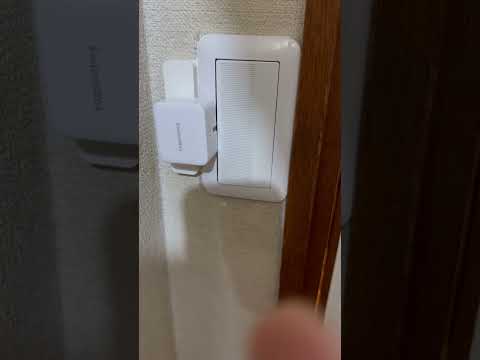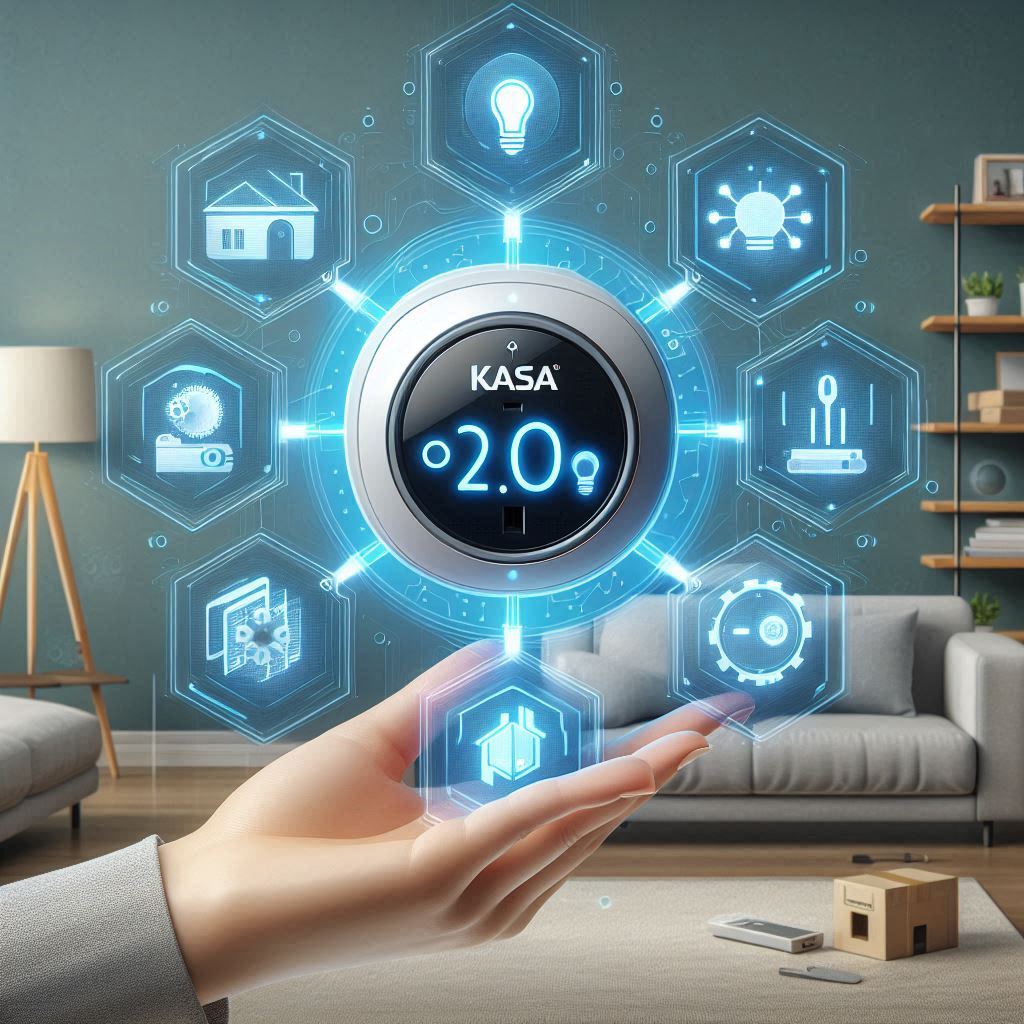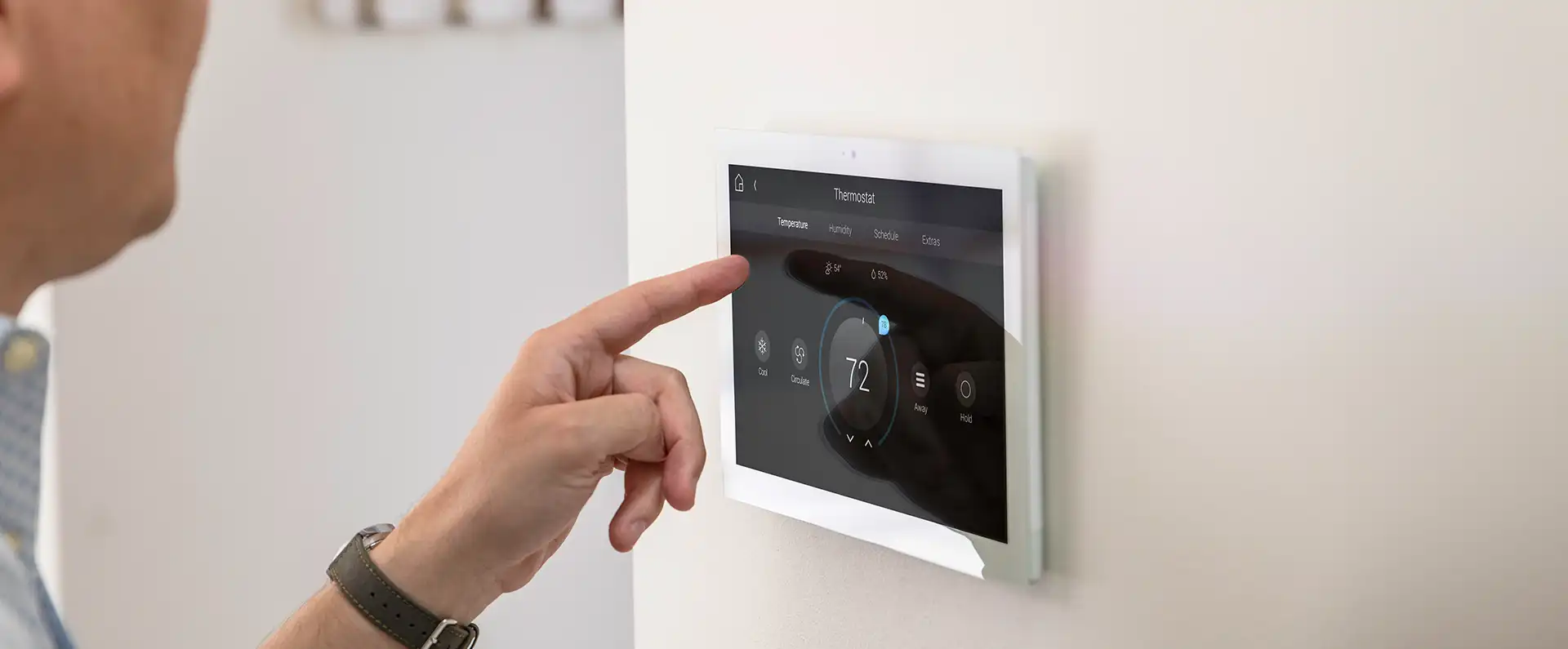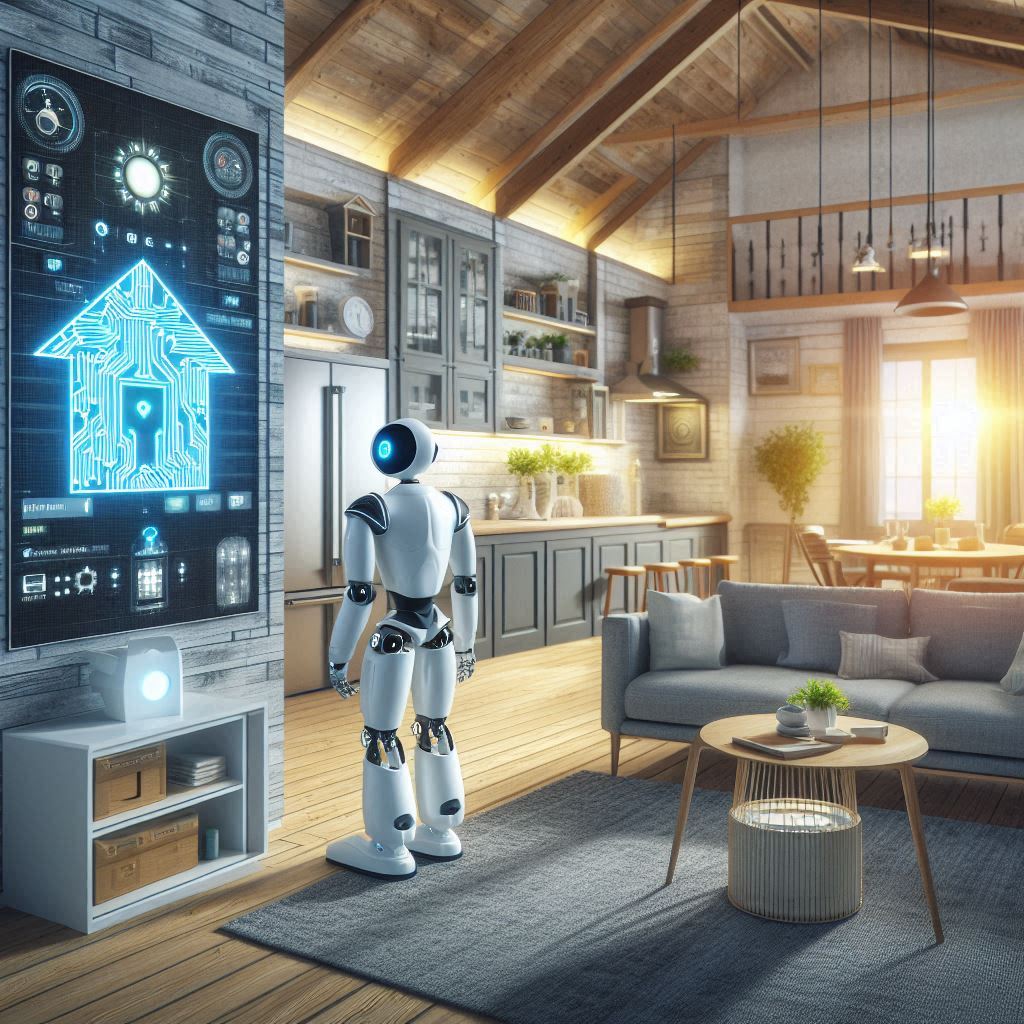Understanding X10 Technology
X10 technology has been a cornerstone in home automation since the late 1970s, offering a reliable and cost-effective solution for DIY enthusiasts and professionals alike. Its simplicity and wide adoption have made it a favorite among those looking to automate their homes without breaking the bank. At its core, X10 operates on a wireless mesh network, allowing devices to communicate and control each other without the need for a central hub. This makes it incredibly versatile and adaptable to various home setups.
Enhancing Your X10 System with the WM100 WiFi HUB
One of the latest additions to the X10 ecosystem is the WM100 WiFi HUB. This device bridges the gap between traditional X10 systems and modern smart home ecosystems, enabling control via smartphones and tablets. By connecting your existing X10 devices to your home’s WiFi network, the WM100 allows for remote access and control of your home automation setup from anywhere in the world.
Setting Up the WM100 WiFi HUB
Setting up the WM100 is straightforward and designed to be user-friendly. Here’s a quick guide to get you started:
- Download the X10 WiFi App: Available on both Google Play Store and Apple App Store, this app is your gateway to controlling your X10 devices remotely.
- Scan the QR Code: On the back of the WM100, you’ll find a unique QR code. Open the app and follow the instructions to scan this code, which will automatically configure the app to recognize your new hub.
- Connect the WM100 to Your Network: Plug the WM100 into an outlet within 100 feet of your router. Press and hold the SYNC button until the LED starts blinking. Then, open the app and tap the CONNECT button. Follow the prompts to link the WM100 to your WiFi network.
- Adding Devices: With the WM100 connected, you’re ready to add your X10 devices. Go to the Devices tab in the app, tap ADD DEVICE, and enter the house and unit codes for each device. This process allows the app to recognize and control your X10 devices.
Utilizing Advanced Features
The WM100 introduces several advanced features designed to enhance your smart home experience:
- Scenes: Create custom scenes for common activities, such as “Good Morning,” which could gradually increase the brightness of your lights or adjust the temperature. This feature simplifies complex automation sequences into single-button actions.
- Rooms: Group similar devices together, like all lights in a particular room, allowing you to control them collectively. This is particularly useful for managing large numbers of devices efficiently.
- Timers and Schedules: Set recurring schedules for your devices, ensuring they operate according to your daily routine. Whether it’s turning on lights at dawn or adjusting thermostats during specific hours, the WM100 lets you automate these tasks effortlessly.
By leveraging the WM100 WiFi HUB, you can significantly expand the capabilities of your X10-based smart home, integrating it seamlessly into the modern digital landscape. Whether you’re looking to upgrade an existing system or starting fresh, the WM100 offers a bridge to the future of home automation, combining reliability with cutting-edge functionality.
Revitalizing Your X10-Based Smart Home
Embarking on the journey to update your X10-based smart home is akin to giving a classic car a modern makeover. X10, the trailblazer in home automation, has been a steadfast companion in households since the 197s, promising a blend of reliability and affordability that few technologies can match. Yet, in our rapidly evolving digital landscape, the question arises: How can we harness the strengths of this venerable system while embracing contemporary conveniences?
Understanding X10 Basics
At its core, X10 operates on a simple yet powerful principle: it uses radio signals to control electrical appliances within your home. This means you can turn lights on and off, adjust thermostats, and even manage security systems from a central hub or remote control. The beauty of X10 lies in its simplicity; it doesn’t require a dedicated power source or complex wiring, making it accessible for anyone looking to dip their toes into home automation.
Bridging the Gap to Modern Technology
To bring your X10 setup into the 21st century, consider integrating it with smart home platforms like Amazon Alexa, Google Assistant, or Apple HomeKit. These integrations allow you to control your X10 devices through voice commands, adding a layer of convenience that was unimaginable when X10 first hit the market. For instance, saying “Alexa, turn on the living room light” could illuminate your space without lifting a finger.
Practical Updates and Enhancements
- Smart Plug Integration: Transform any X10 device into a smart appliance by plugging it into a smart plug. This method allows you to monitor energy usage, schedule tasks, and integrate the device with other smart home ecosystems.
- Firmware Upgrades: Ensure your X10 devices are running the latest firmware. Manufacturers often release updates that improve performance, add new features, and enhance compatibility with modern systems.
- Security Enhancements: Implementing additional layers of security, such as encryption for wireless communications, can protect your home automation system from unauthorized access.
Visualizing Your Updated Smart Home
Imagine walking into a room and having your lighting automatically adjust to your preference, thanks to motion sensors integrated with your X10 system. Or perhaps you’re away from home, and your security camera sends alerts to your phone if it detects unusual activity. These scenarios highlight how updating your X10 setup can seamlessly blend old-school reliability with cutting-edge functionality, creating a smart home environment that’s both efficient and intuitive.
Conclusion
Updating your X10-based smart home isn’t just about keeping pace with technological advancements; it’s about enhancing your lifestyle with a system that understands the balance between tradition and innovation. By leveraging the timeless appeal of X10 with modern enhancements, you’re not only preserving a piece of history but also crafting a smart home experience that’s uniquely yours.
The Evolution of X10: A Pioneer in Home Automation
The Genesis of X10
X10’s story starts in the late 197s, heralding the dawn of home automation. This technology was celebrated for its straightforwardness, cost-effectiveness, and hassle-free setup, swiftly becoming a common feature in many households. However, it wasn’t without its flaws. Critics pointed out its constraints and the absence of robust security measures, such as encryption. Yet, despite these shortcomings, X10 played a crucial role in kickstarting the smart home movement, setting the stage for the advanced technologies that would emerge later.
The Impact of X10 on Smart Homes
X10’s influence on the smart home industry cannot be overstated. It introduced homeowners to the concept of controlling various aspects of their living environment remotely, from lighting to security systems. This accessibility and the potential for customization were groundbreaking at the time. While modern smart home solutions have far surpassed X10 in terms of features and security, the foundational principles established by X10 remain relevant today.
Limitations and Legacy
Despite facing criticism for its limitations, X10 left a lasting legacy. Its simplicity and affordability made it accessible to a wide audience, democratizing the idea of home automation. However, as technology advanced, the need for more secure and reliable systems became apparent. This led to the development of newer protocols and standards, which addressed some of the issues inherent in X10.
Conclusion
In retrospect, X10 stands as a testament to the early aspirations of home automation. It may not have been perfect, but it was a significant step forward in making our homes smarter. As we look back, we can appreciate how X10 paved the way for the sophisticated smart home ecosystems we enjoy today.
Enhancing Your X10 Smart Home: The Power of Interoperability
X10 smart homes have always been celebrated for their longevity and cost-effectiveness. However, one area where they’ve often lagged behind modern smart home setups is interoperability—how well different smart devices work together. But thanks to advancements in technology, X10 users now have a gateway to a universe of seamless integration.
Bridging the Gap: X10 Compatibility with Modern Standards
At the heart of this transformation is the use of bridges and adapters. These tools act as translators, converting X10 signals into the languages spoken by today’s smart home ecosystems. Imagine having a universal translator for your home devices; that’s essentially what these bridges do.
Practical Example: Integrating X10 with Alexa
Let’s say you want to control your X10 lights with Amazon’s Alexa. Without a bridge, Alexa wouldn’t understand the commands sent by your X10 modules. Enter the X10-Alexa bridge. By connecting this device to both your X10 system and your Alexa-compatible speaker, you open up a whole new way to interact with your smart home. Now, you can simply ask Alexa to turn off the living room lights, and she’ll relay the command through the bridge to your X10 dimmer switch.
Why It Matters: The Benefits of Interoperability
Interoperability isn’t just about making your gadgets talk to each other; it’s about enhancing your smart home experience. With the ability to integrate X10 devices into a broader ecosystem, you gain access to advanced functionalities and greater convenience. For instance, setting up routines that trigger actions across different platforms becomes possible. Want your smart thermostat to adjust the temperature when your X10 security system detects motion? With interoperability, that’s within reach.
Looking Ahead: The Future of X10 Integration
As smart home technologies continue to evolve, so does the potential for X10 integration. Developers are constantly working on new bridges and apps that expand the capabilities of X10 devices. Staying informed about these developments can help you maximize the potential of your X10 setup, ensuring it remains relevant and functional in an increasingly connected world.
In summary, the journey towards updating an X10-based smart home doesn’t have to be daunting. With the right bridges and adapters, you can unlock a world of possibilities, turning your legacy smart home system into a hub of modern convenience.
The Evolution of X10: Introducing the WM100 WiFi Module
The X10 smart home system has been a staple for homeowners seeking to automate their homes since its inception. However, one of the key limitations of traditional X10 setups was the lack of wireless connectivity. This meant that controlling your home automation devices required being within a certain range of your home’s control center. Enter the WM100 WiFi module—a game-changer for X10 enthusiasts.
Bridging the Gap with WiFi Connectivity
The WM100 WiFi module is essentially a bridge between your existing X10 devices and the modern world of WiFi. It allows your X10 modules to communicate over WiFi, effectively eliminating the need for physical wires or being in close proximity to your home’s control center. This transformation means you can now control your entire smart home setup from anywhere using your smartphone or tablet.
Practical Applications and Control
With the WM100, the possibilities for home automation are vast and versatile. Here are a few practical examples to illustrate how this technology can enhance your daily life:
- Remote Control: Whether you’re away on vacation or simply relaxing in another room, you can adjust lighting, turn on appliances, or even simulate occupancy patterns to deter burglars.
- Scene Creation: Imagine creating a “movie night” scene with dimmed lights, adjusted thermostat settings, and the perfect ambient music—all with just a few taps on your phone.
- Timers and Schedules: Easily set timers for lights to turn off automatically after a certain period, ensuring energy efficiency and security without lifting a finger.
Enhancing Your X10 Experience
The introduction of the WM100 WiFi module represents a significant step forward in making X10-based smart homes more accessible and convenient. By leveraging the power of WiFi, homeowners can enjoy the benefits of a fully automated home without the restrictions of traditional X10 systems. Whether you’re looking to upgrade your existing setup or dive into the world of X10 for the first time, the WM100 offers a seamless path towards a smarter, more connected living space.
Enhancing Your Smart Home: The Power of Scenes and Rooms
Understanding Scenes
Imagine having the power to transform your living space with just one touch. That’s exactly what scenes in an X10-based smart home system offer. A scene is essentially a collection of commands that work together to create a specific atmosphere or mood within your home. For instance, you might have a “Movie Night” scene that dims the lights, lowers the blinds, and turns off all distractions, preparing your living room for movie time. Or perhaps a “Good Morning” scene that wakes you up with soft lighting, plays your favorite radio station, and even prepares your coffee maker.
Example Scene Setup:
1. Dim Living Room Lights to 30%
2. Lower Blinds in Living Room
3. Turn Off Kitchen TV
4. Set Coffee Maker to StartBy grouping these actions under a single command, you streamline your daily routines and enhance your home’s ambiance with ease.
Mastering Rooms
While scenes focus on activities, rooms in an X10-based smart home system are all about geography. Rooms allow you to categorize and manage devices based on their physical location within your house. This means you can easily control all devices in a particular area—like every light switch, thermostat, or security camera—simultaneously. For example, setting up a “Bedroom” room lets you turn off all bedroom lights or adjust the temperature with a single command, no matter how many devices you have scattered throughout.
Example Room Setup:
1. Assign Living Room Lights to the "Living Room" room.
2. Add Dining Room Thermostat to the "Dining Room" room.
3. Include All Bedroom Devices to the "Bedroom" room.This organizational approach not only makes controlling your smart home more intuitive but also ensures that managing your home automation becomes a seamless part of your daily life.
Why It Matters
The integration of scenes and rooms into your X10-based smart home system represents a significant leap forward in home automation. By allowing users to bundle actions and group devices by location, these features democratize the smart home experience, making it accessible and efficient for everyone. Whether you’re looking to create the perfect ambiance for a quiet evening or quickly manage all devices in a specific area, scenes and rooms provide the tools needed to tailor your smart home to your lifestyle and preferences.
In essence, scenes and rooms are not just about adding convenience; they’re about enhancing your quality of life by making your smart home work smarter for you.
Enhancing Your X10 Smart Home: The Role of Bridges and Adapters
Keeping your X10 smart home system current with the latest advancements in smart home technology is crucial for maintaining its efficiency and appeal. This involves leveraging compatible bridges and adapters, which serve as critical intermediaries, facilitating communication between your existing X10 setup and contemporary smart home platforms. Let’s delve deeper into how these components work and why they’re essential for updating your X10-based smart home.
Understanding Bridges and Adapters
Bridges and adapters act as translators within the ecosystem of smart devices. They convert signals from one format to another, enabling devices that were designed decades ago to interact seamlessly with today’s cutting-edge technologies. For instance, an X10 bridge might translate commands from an X10 controller into a format understood by a Wi-Fi-enabled thermostat or security camera.
Why Invest in Bridges and Adapters?
Investing in bridges and adapters offers several key benefits:
- Seamless Integration: It allows your X10 devices to integrate smoothly with newer smart home systems, such as Amazon Alexa, Google Assistant, and Z-Wave networks.
- Expanded Functionality: By bridging the gap between X10 and modern protocols, you unlock additional features and capabilities for your smart home.
- Future-Proofing: Ensures that your smart home setup remains relevant and adaptable to future technological advancements.
Practical Examples
Imagine you have an X10 lighting control system but want to control your lights through a voice assistant. A compatible adapter or bridge would allow you to do just that, transforming your X10 light switches into smart devices that respond to voice commands.
Another scenario involves enhancing your home security. An X10 security sensor paired with a modern bridge could send alerts directly to your smartphone via a smart home hub, providing real-time monitoring and peace of mind.
Choosing the Right Bridge or Adapter
Selecting the right bridge or adapter depends on your specific needs and the devices you wish to integrate. Consider factors such as compatibility with your existing X10 devices, ease of installation, and the level of support offered by the manufacturer.
Conclusion
Updating your X10-based smart home with bridges and adapters is not only about keeping pace with technology; it’s about enriching your living experience with convenience, flexibility, and advanced functionalities. By embracing these updates, you ensure that your smart home remains a vibrant part of your daily life, capable of adapting to new trends and technologies as they emerge.
Enhancing Security in Your X10 Smart Home
Understanding X10’s Basic Security
X10 smart home systems have been a staple in home automation for decades, known for their ease of use and affordability. However, one area where X10 has traditionally lagged behind modern standards is security. The basic X10 protocol sends signals over power lines or radio frequencies without encryption, making it susceptible to eavesdropping and interference from nearby devices.
Why Security Matters
Security isn’t just about keeping intruders out; it’s also about protecting your privacy and ensuring the reliability of your smart home system. Without proper safeguards, malicious actors could potentially intercept commands sent to your lights, thermostats, or security cameras, leading to unauthorized control or data breaches.
Upgrading to Secure Protocols
To bolster the security of your X10 smart home, consider upgrading to encrypted communication protocols. This involves replacing standard X10 modules with their secure counterparts that support AES encryption. For example, instead of using a basic X10 light switch module, opt for one that encrypts all signals before transmission.
Practical Example: Securing Your Lighting System
Imagine you’ve decided to upgrade your living room lighting to be controlled via your smart home system. Instead of installing a regular X10 dimmer switch, choose an encrypted model. This ensures that every command—whether it’s turning the lights on, adjusting brightness, or changing colors—is securely transmitted, preventing anyone from intercepting and altering these commands.
Implementing Secure Practices
Beyond upgrading hardware, there are several secure practices you can adopt:
- Change Default Credentials: Ensure all your smart devices use unique passwords rather than default settings, which are easily guessable.
- Regular Firmware Updates: Keep your devices’ firmware up-to-date to patch any known vulnerabilities.
- Network Segmentation: Isolate your smart home network from your main internet connection to minimize exposure to threats.
Conclusion
Securing your X10 smart home doesn’t have to be complicated. By upgrading to encrypted modules and adopting simple security best practices, you can significantly enhance the safety and integrity of your home automation system. Remember, the goal is to create a smart home environment that’s both convenient and secure, providing peace of mind for you and your family.
Enhancing Your X10-Based Smart Home: A Guide to Updates
X10 technology has been a cornerstone in the evolution of smart homes, offering a blend of affordability and functionality that appeals to both newcomers and seasoned users alike. As the landscape of home automation continues to evolve, staying abreast of the latest updates and advancements in X10 is crucial for maximizing your smart home experience. This guide aims to demystify the process of updating your X10-based smart home, ensuring you can enjoy the benefits of a modern, efficient, and enjoyable living environment.
Understanding X10 Updates
At its core, X10 is a communication protocol designed for home automation, allowing devices within a home network to communicate and control each other. The beauty of X10 lies in its simplicity and cost-effectiveness, making it accessible for anyone looking to dip their toes into smart home technology. However, like all technologies, X10 evolves over time, introducing new features and improvements that enhance its capabilities.
Why Update?
Updating your X10 system is akin to upgrading your smartphone—new updates bring performance improvements, added security, and new functionalities. For instance, newer firmware versions may offer better energy management features, enabling your lights and appliances to operate more efficiently. Additionally, updates can extend the lifespan of your devices, ensuring they remain compatible with the latest standards and security protocols.
Getting Started with Updates
Embarking on the update process might seem daunting, but with the right approach, it can be straightforward and rewarding. Here’s a step-by-step guide to help you navigate through the update process:
- Research: Start by researching the latest updates available for your X10 devices. Manufacturer websites and online forums are excellent resources for finding detailed information on new releases.
- Backup: Before proceeding with any updates, ensure you have a backup of your current settings. This precautionary measure allows you to revert to your previous state if something goes awry during the update process.
- Update Process: The update process varies depending on the device. Generally, it involves connecting your device to a computer via USB, downloading the latest firmware from the manufacturer’s website, and following the on-screen instructions to complete the update.
- Post-Update Checks: After the update, perform a series of checks to ensure everything is functioning as expected. This includes testing all your devices to confirm they are responding correctly and checking for any new features or improvements.
Practical Examples and Resources
To illustrate the practicality of updating your X10 system, consider the example of a lamp module. An outdated lamp module might only support basic on/off functionality. However, after updating to the latest firmware, it could support dimming controls, scene settings, and even integration with voice assistants. Such enhancements not only add convenience but also significantly improve the overall smart home experience.
For comprehensive guidance and the latest updates, reputable sources such as X10 Pro and SmartHomeStart offer valuable insights and support. These platforms provide detailed tutorials, FAQs, and community forums where you can find solutions to common issues and share experiences with fellow X10 enthusiasts.
In conclusion, keeping your X10-based smart home updated is essential for reaping the full benefits of modern smart home technology. By staying informed and proactive about updates, you can ensure your home automation system remains efficient, secure, and aligned with the latest trends and innovations in the smart home industry.














